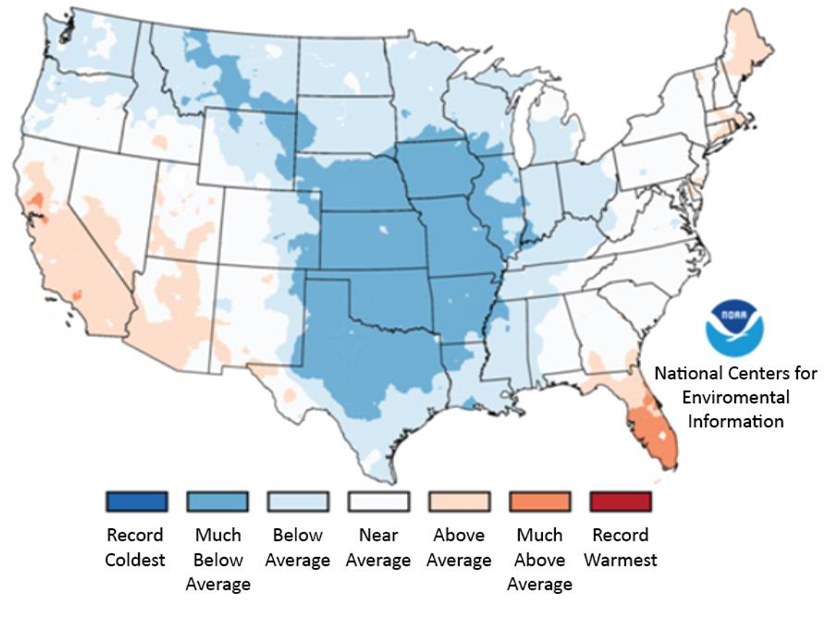The North American bulk electric system faced “unprecedented challenges” in 2021 that resulted in significant hardships to customers even though grid operators were largely able to maintain reliability, NERC said in its 2022 State of Reliability Report issued Wednesday.
Unlike the ERO’s seasonal and long-term reliability assessments, the State of Reliability is meant to review the performance of the electric grid in the prior year, identify performance trends and emerging reliability risks, and measure the success of mitigation activities. NERC staff previewed the report in May for the organization’s Board of Trustees, which approved the report earlier this month. (See NERC Board Accepts State of Reliability Report.)
Winter Storms Lead Review
This year’s report identified six key findings, four of which had to do with severe weather and other impacts of climate change. First, the winter storms of February 2021 “demonstrated that a significant portion of the generation fleet in the impacted areas was unable to supply electrical energy during extreme cold weather.”
The storm resulted in more than 23,000 MW of manual firm load shed across Texas and the South Central U.S., the largest controlled firm load shed event in U.S. history, according to FERC and NERC’s joint report on the event released last year. (See FERC, NERC Release Final Texas Storm Report.) Solely because of this one event, the ERO recorded 70.5 hours of operator-initiated firm load shed in 2021, higher than any other year since 2017.
At the other extreme was the Northwest Heat Dome, which affected the Pacific Northwest in June and July and caused temperatures to hit record highs — for example, 108 degrees Fahrenheit in Seattle and 116 in Portland. During the heat wave, which resulted in more than 1,000 deaths, “utilities across the region [set] new all-time summer peak demand records [and] several substation distribution transformers reached internal hotspot levels causing outages in some areas.”
Along with the severe weather events themselves — which also included the California wildfires, Hurricane Ida’s impact on Louisiana and Mississippi, and the storm system that spawned tornadoes in eight states in December — NERC’s report singled out electricity and natural gas interdependencies as another key finding. The vulnerability of the BES to disruptions in the natural gas supply has been a topic of concern for years, but it was highlighted in the February storms, when multiple gas generation plants were unable to perform because of freezing temperatures, resulting in a knock-on effect in which other gas generators could not function because of lack of electricity.
“It is now evident that these risks are no longer emerging; they are certain and expected to increase. Natural gas-fired generators are now necessary balancing resources for reliable integration of … renewable energy resources and can be expected to remain so until new storage technologies are fully developed and deployed at scale,” the report said.
While the direct effects of climate change are visible in the growth of severe weather events, the efforts of grid planners to prevent such impacts by adding wind and solar plants has also created reliability risks.

NERC’s report cited the Odessa Disturbance — in which nearly 20 solar and wind facilities suffered reduced voltage as a result of a fault in a combined cycle plant in Odessa, Texas — as well as four disruptions in California as evidence of “continued BES reliability risks associated with inadequately interconnected” inverter-based resources (IBRs). (See Texas RE, WECC Call For Coordination on DER Issues.) In addition, NERC noted that in several areas, “peak demand could not be met without renewable generation,” suggesting that future disruptions to IBRs could lead to larger outages.
Cybersecurity Still Poses Problems
Among non-weather-related challenges, the threat of cyberattacks loomed large in 2021, with NERC noting “a series of attacks on the digital supply chain” and suspicious incidents across the industry such as phishing, malware and denial-of-service attacks. Threats came from both cyber criminals and nation-state adversaries such as China, Iran, North Korea and Russia.
In a media call introducing the report, John Moura, NERC’s director of reliability assessment and performance analysis, declined to specify how many of last year’s cyber incidents involved attacks against the industrial control systems that directly control the grid, as opposed to utilities’ information technology networks. He did, however, emphasize the “increased sophistication” displayed by the attackers and the need for ongoing vigilance by the industry, NERC and the Electricity Information Sharing and Analysis Center.
Finally, the report noted that despite frequent calls for new metrics to “evaluate the resilience of the [bulk power system] to the changing resource mix,” such measurements have not yet emerged. While NERC acknowledged that various stakeholders are working to develop new metrics, it will be difficult to properly evaluate the resilience of the grid until the task is completed.




